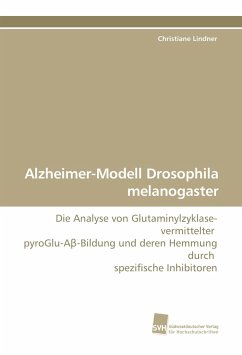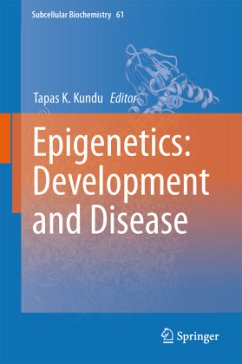
Brain Development in Drosophila melanogaster

PAYBACK Punkte
57 °P sammeln!
The central nervous system (CNS) represents the organ with the highest struc tural and functional complexity. Accordingly, uncovering the mechanisms leading to cell diversity, patterning and connectivity in the CNS is one ofthe major chal lenges in developmental biology. The developing CNS of the fruitfly Drosophila melanogaster is an ideal model system to study these processes. Several principle questions regarding neurogenesis (like stem cell formation, cell fate specification, axonal pathfinding) have been addressedinDrosophilaby focusing on the relatively simply structuredtruncal partsofth...
The central nervous system (CNS) represents the organ with the highest struc tural and functional complexity. Accordingly, uncovering the mechanisms leading to cell diversity, patterning and connectivity in the CNS is one ofthe major chal lenges in developmental biology. The developing CNS of the fruitfly Drosophila melanogaster is an ideal model system to study these processes. Several principle questions regarding neurogenesis (like stem cell formation, cell fate specification, axonal pathfinding) have been addressedinDrosophilaby focusing on the relatively simply structuredtruncal partsofthe nervous system. However, informationprocess ing (e. g. , vision, olfaction), behavior, learning and memory require highly special ized structures, which are located in the brain. Owing to much higher complexity and hidden segmental organisation, our understandingofbrain development is still quite rudimentary. Considerable advances have been made recently in bringing the resolution ofbrain structures to the level ofindividual cells and their lineages, which significantly facilitates investigations into the mechanisms controlling brain development. This book provides an overview of some major facets of recent research on Drosophila brain development. The individual chapters were written by experts in each field. V. Hartenstein et al survey the generic cell types that make up the developing brain and describe themorphogenesisofneural lineages and theirrelation ship to neuropil compartments in the larval brain. Recent findings on anteroposterior regionalization and on dorsoventral patterning in the embryonic brain are reviewed in the chapters by R. Lichtneckert and H. Reichert and by R. Urbach and G. Technau, respectively. Both processes show striking parallels betweenDrosophila and mouse.













